English versión
A moving example of this is the monument I present to you today, which tells the tragic story of an event that occurred in Cuba on November 27, 1871. On that day, eight young Cubans were unjustly shot, an event that has remained engraved in the history as one of the most merciless and undignified episodes that occurred under the Spanish colonial regime in Cuba.

This event took place in 19th century colonial Cuba, where a group of medical students were falsely accused of having desecrated the tomb of a Spanish journalist. Of a group of more than forty of these young people who were imprisoned and submitted to trial, only eight of them would be shot as an punishment of the Spanish government to the rebelliousness and the independence thoughts of the people of Cuba.
With this beautiful funerary monument located in the Christopher Columbus Necropolis in Havana, not only the memory of these young men is honored, but also that of their defense lawyer, the Spanish captain Federico Capdevila, responsible for their energetic defense during the trial and whose remains rest next to those of his defendants. Also buried here is Fermín Valdez Domínguez, a Cuban patriot who was imprisoned with the rest of the students in his youth and who later devoted part of his life to finding the remains of his classmates who were shot, since they were in a common grave. He also dedicated himself to cleanse their memory of the lie of which they were accused.

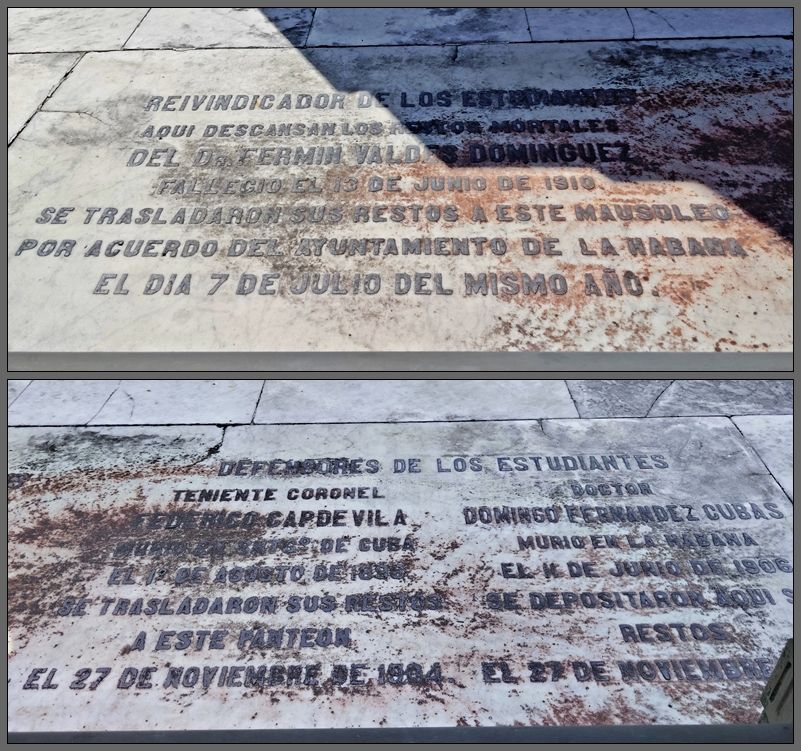
It is a beautiful monument made of white marble that shows several symbols allegorical to justice and representing the events that took place. It is on a pedestal of gray marble, and on the lateral faces of its lowest level are eight bronze reliefs (four on each side) of the faces of these young students along with their names.
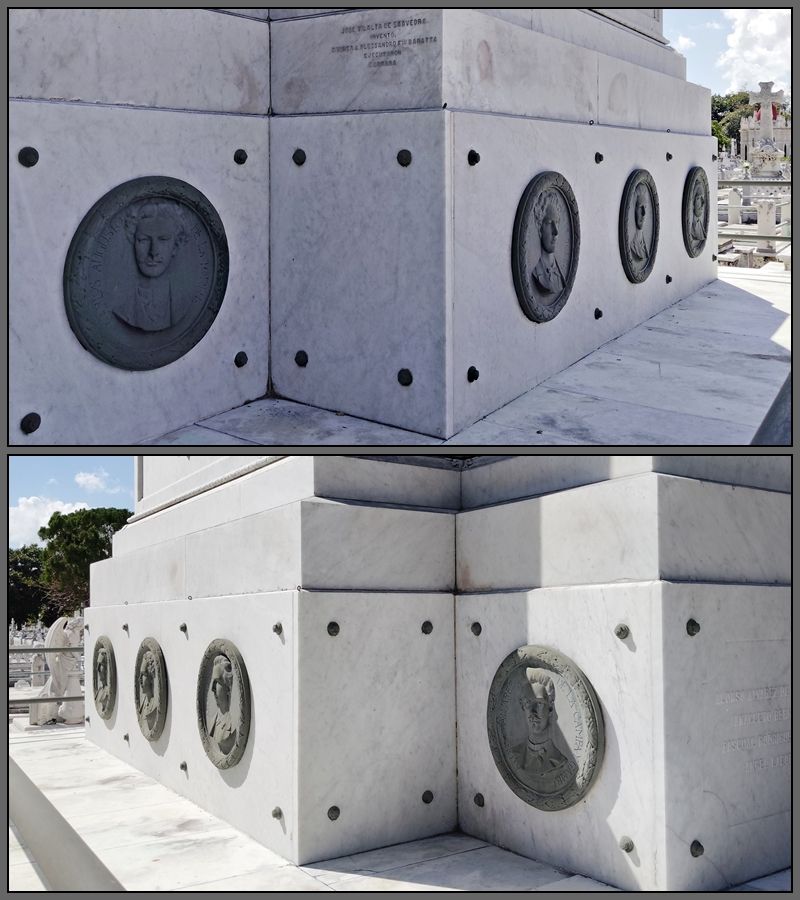
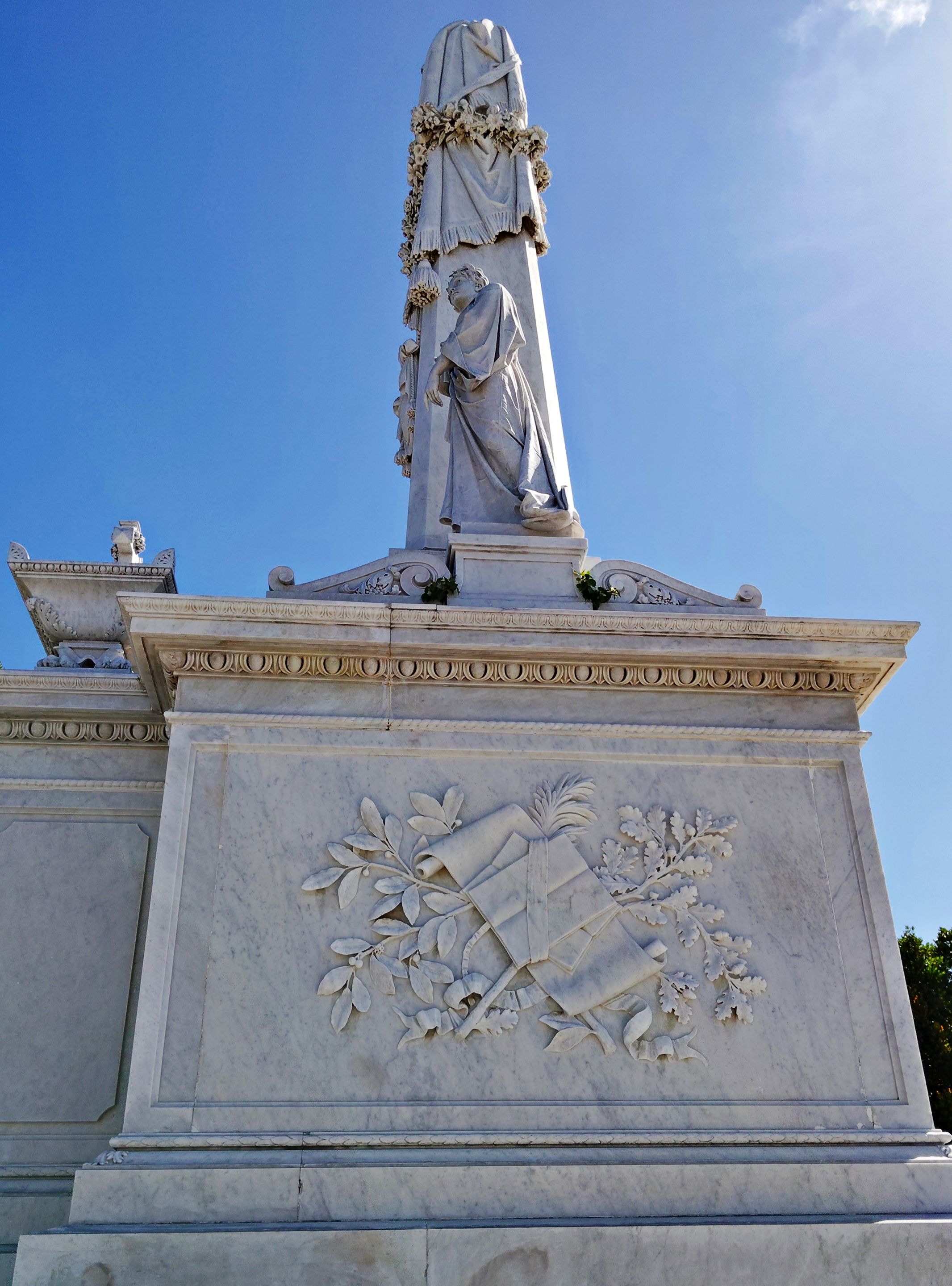
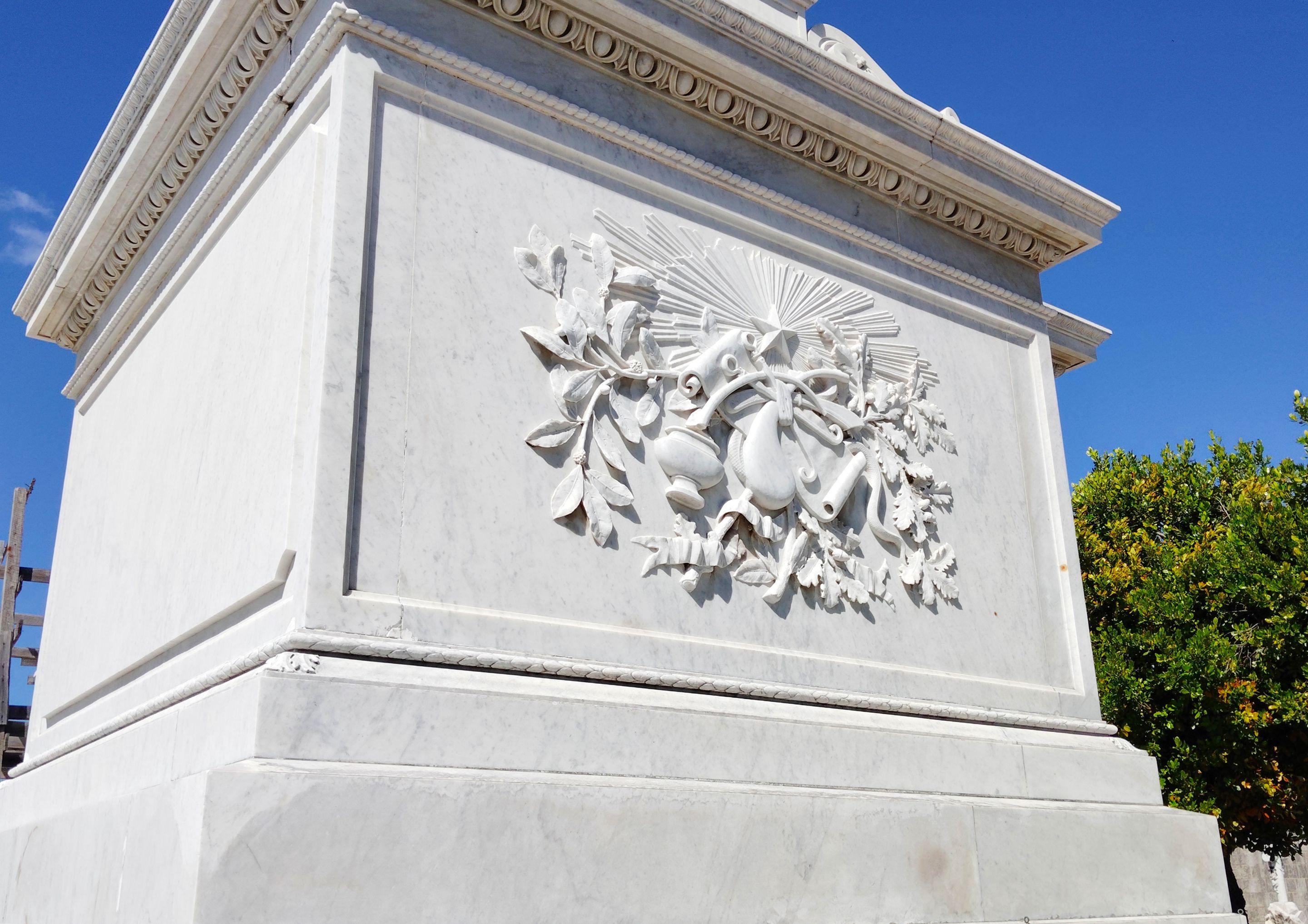
When we stand in front of the place, in its central part we can see an angelic sculpture of a woman. Looking at her I can't help but think of something pure, it is a sculpture to represent the innocence and the truth that cannot be silenced.

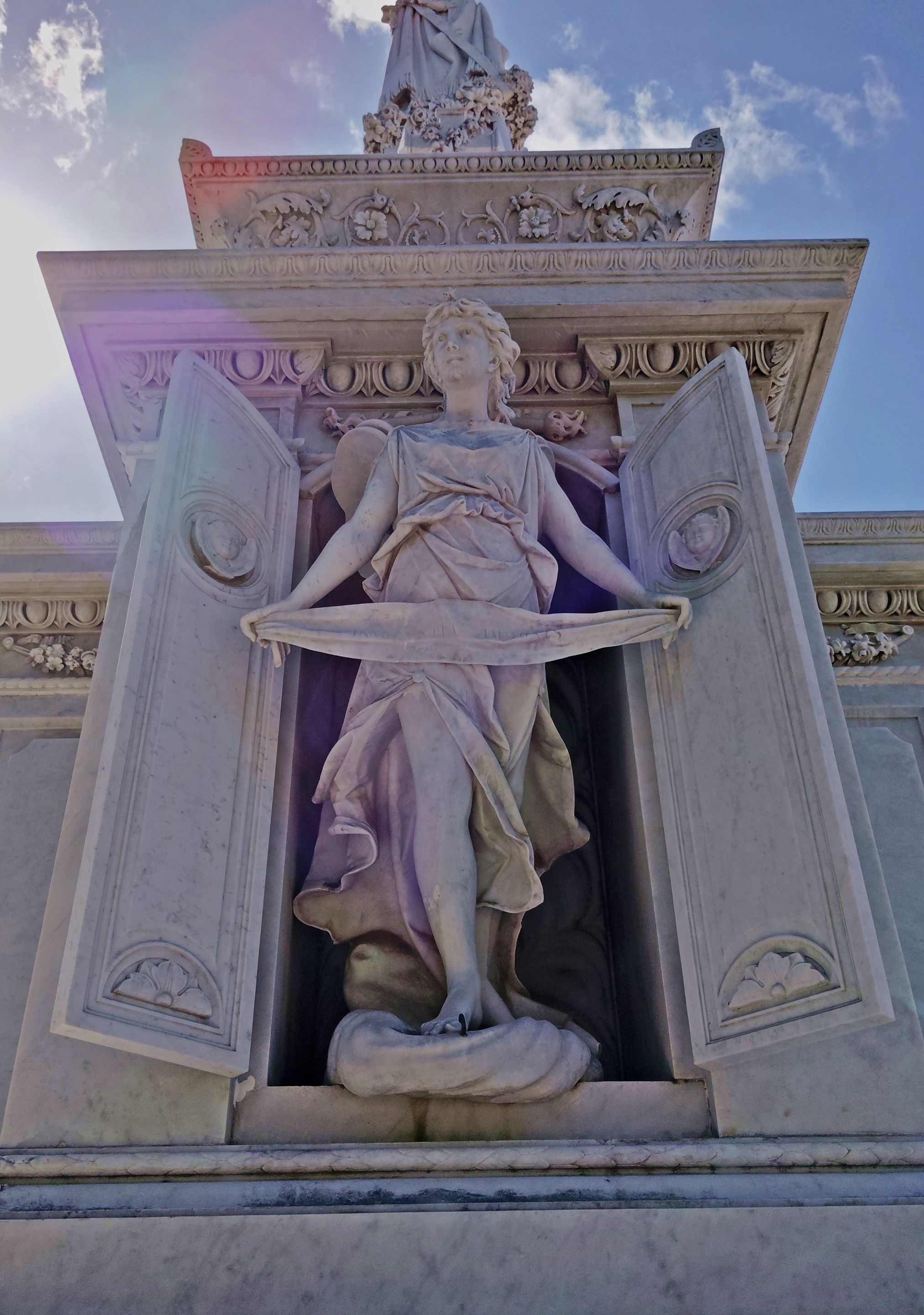
At the top of this sculptural ensemble, there is a pillar as a funerary symbol, covered by a mantle and a wreath of flowers. For me, this represents the mourning and protection of the memory of those who rest here. On a shield in the center is carved the date when this sad event occurred.
On both sides of the pillar are two sculptures of women. One of the two represents justice with the sword in one hand and the scales in the other, but without the blindfold and in a somewhat severe attitude, as if making us see how little truth there was in the trial and in the accusations of which these young men were victims.
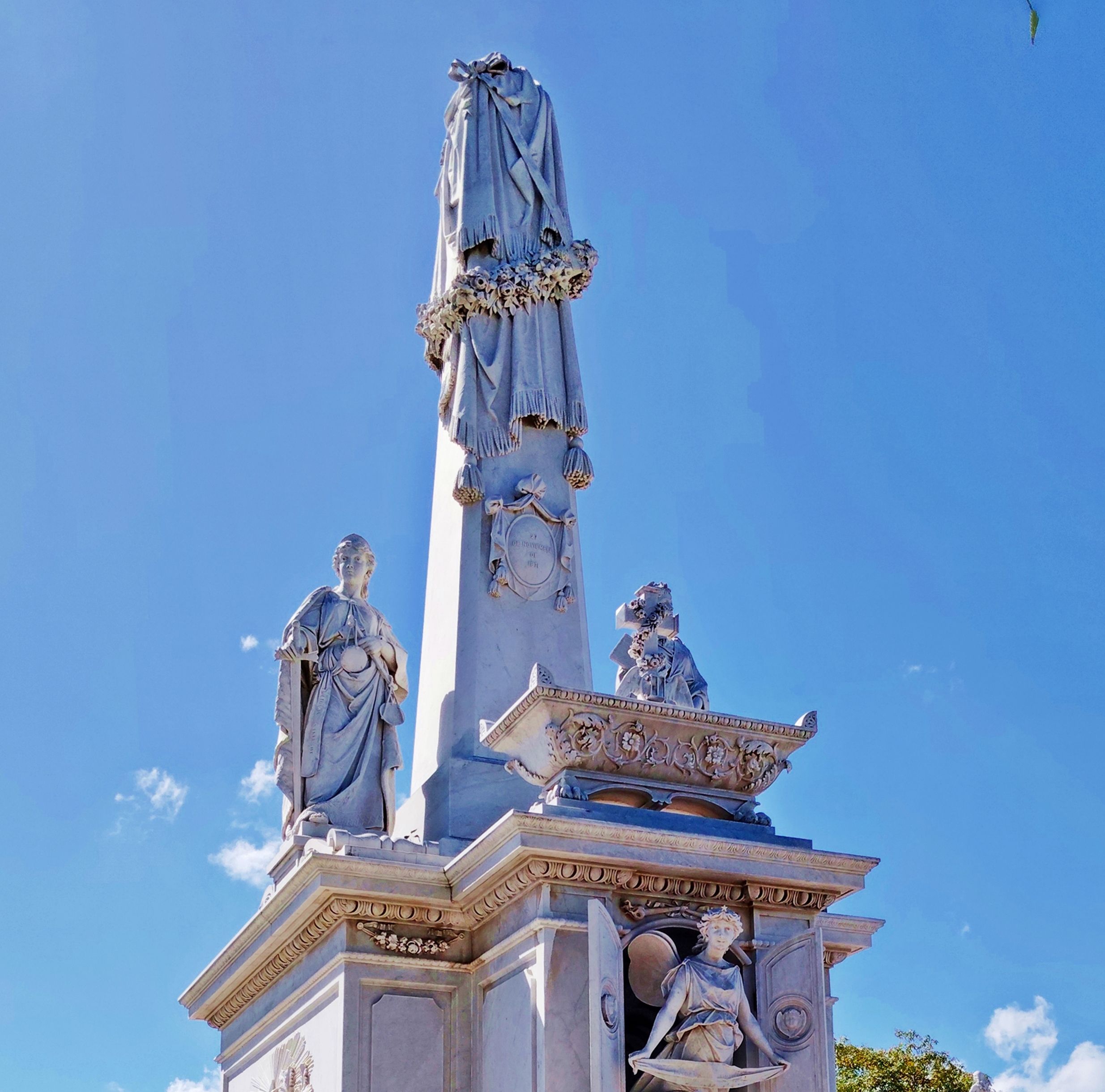

This is a very beautiful mausoleum, I see it as a wonderful tribute to the memory of these young people, so that their lives and their history will endure through time, being at the same time a symbol of repudiation of the injustice that was committed.
This is a very moving memorial and I am very happy to have discovered it. I hope it has moved you as much as it has me.
VERSION en Español
Los monumentos desempeñan un papel fundamental al recordar y conmemorar eventos históricos. Nos permiten revivir sucesos pasados que no deben caer en el olvido, ya sea porque encarnan actos heroicos o nos recuerdan actos que nunca deben repetirse.
Un ejemplo conmovedor de esto es el monumento que les presento hoy, que narra la trágica historia de un acontecimiento ocurrido en Cuba el 27 de noviembre de 1871. Ese día, ocho jóvenes cubanos fueron injustamente fusilados, un hecho que se ha quedado grabado en la historia como uno de los episodios más despiadados e indignos ocurridos bajo el régimen colonial español en Cuba.
Narrando los hechos
Este hecho tuvo lugar en la Cuba colonial del siglo XIX, dónde un grupo de estudiantes de medicina fueron falsamente acusados de haber profanado la tumba de un periodista español. De un grupo de más de cuarenta de estos jóvenes que fueron encarcelados y sometidos a juicio, solo ocho de ellos serían fusilados como escarmiento del gobierno español a la rebeldía y los pensamientos independentistas del pueblo de Cuba.
Con este hermoso monumento funerario que se encuentra en la Necrópolis de Cristóbal Colón en La Habana, no solo se honra la memoria de estos jóvenes, sino también la de su abogado defensor, el capitán español Federico Capdevila, responsable de su enérgica defensa durante el juicio que se les realizó y cuyos restos descansan junto a los de sus defendidos. También aquí se encuentra sepultado Fermín Valdez Domínguez, un patriota cubano que estuvo encarcelado con el resto de los estudiantes en su juventud y que después consagró parte de su vida a encontrar los restos de sus compañeros de clase fusilados, ya que se encontraban en una fosa común. También se dedicó a limpiar su memoria de la mentira de la que fueron acusados.
El monumento
Se trata de un bello monumento elaborado en mármol blanco que muestra varios símbolos alegóricos a la justicia y que representan los hechos ocurridos. Esta sobre un pedestal de mármol gris, y en las caras laterales de su nivel más bajo están los ocho relieves en bronce (cuatro por cada lado) de los rostros de estos jóvenes estudiantes junto con sus nombres.
Al pararnos de frente al lugar, en su parte central podemos ver asomándose a una angelical escultura de mujer. Al mirarla no puedo dejar de pensar en algo puro, es una escultura para representar la inocencia y la verdad que no puede ser silenciada.
En lo más alto de este conjunto escultórico, hay un pilar como símbolo funerario, cubierto por un manto y una corona de flores. Para mí, esto representa el duelo y la protección a la memoria de aquellos que descansan aquí. En un escudo en el centro hay tallada la fecha en que ocurrió este triste hecho.
A ambos lados del pilar se encuentran dos esculturas de mujeres. Una de las dos representa a la justicia con la espada en una mano y la balanza en la otra, pero sin la venda de los ojos y en actitud un poco severa, como haciéndonos ver lo poco de verdad que hubo en el juicio y en las acusaciones de las que fueron víctimas estos jóvenes.
Este es un mausoleo muy hermoso, yo lo veo como un bello tributo a la memoria de estos jóvenes, para que su vida y su historia perduren a través del tiempo, siendo a la vez un símbolo de repudio hacia la injusticia que se cometió.
Este es un monumento muy conmovedor y me alegro mucho haberlo descubierto. Espero que los haya emocionado tanto como a mí.

